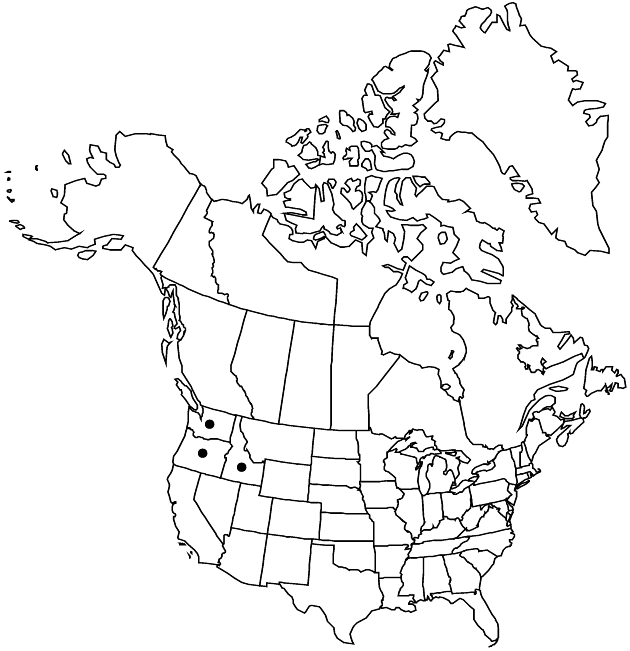Crepis barbigera
Contr. U.S. Natl. Herb. 3: 565, plate 26. 1896.
Perennials, 20–80 cm (taproots slender, caudices swollen). Stems 1–3(–5), erect, branched (branches strict with relatively few secondary branches), sparsely to densely tomentulose. Leaves basal and cauline; petiolate (petiole bases broadened, clasping); blades elliptic-lanceolate, 10–40 × 2–7 cm, margins deeply pinnately lobed (lobes mostly lanceolate or falcate, usually entire, rarely with 1–2 teeth), apices attentuate, faces tomentose or glabrate, sometimes setose. Heads 15–20+, in congested, corymbiform arrays. Calyculi of 5–7, lanceolate, green-setose bractlets 2–5 mm. Involucres cylindric, 9–17 × 4–7 mm. Phyllaries 6–10, lanceolate, 12–15 mm (margins yellowish, scarious), apices acute, abaxial faces tomentulose and coarsely green-setose, adaxial glabrous or with fine hairs. Florets 8–25; corollas yellow, 18–20 mm. Cypselae dark brown to olive, subcylindric, 8–9 mm, apices tapered, ribs 10–12 (strong); pappi whitish or yellowish white, 6–9 mm. 2n = 44, 55, 88.
Phenology: Flowering May–Jul.
Habitat: Open rocky places, sandy slopes, dry pine-oak woods, sagebrush slopes, foothills and plains
Elevation: 100–2000 m
Distribution

Idaho, Oreg., Wash.
Discussion
Crepis barbigera is recognized by its relatively tall stature, deeply pinnately lobed leaves, tomentulose stems, and phyllaries with coarse, green, eglandular setae. It is a complex of polyploid, apomictic forms, combining characteristics of C. atribarba, C. acuminata, and C. modocensis, from which the species is presumed to have been derived by intercrossing (E. B. Babcock 1947).
Selected References
None.